How to identify phishing emails and unsafe websites
How to identify phishing emails
1. Check the domain name of email address
The first thing to keep in mind is that there aren't any companies that contact you from a public domain name like '@ gmail.com', '@ yahoo.com', or '@ outlook.com' ,. .
Most companies, corporations, or organizations have their own email domain and email addresses. For example, Google or its employees will never email you from addresses like 'xyz@gmail.com'. Instead, they will use their own domain name, for example '@ google.com'.
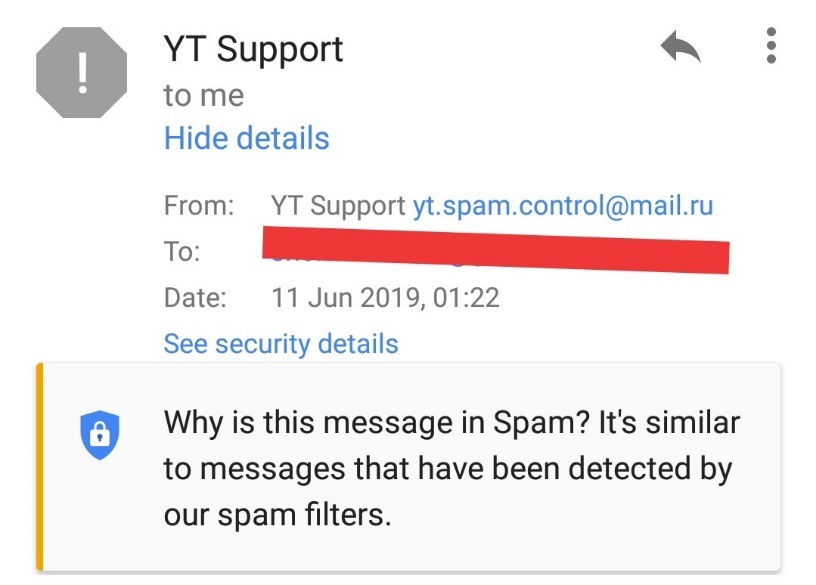
Therefore, if you see the domain name after the '@' character in an email address coincides with the domain name of the official website of a company, corporation, or organization, that email is an official email from public company, corporation, or organization and vice versa.
2. Check the Mailed-by, Signed-by, and Security items
Hackers can use fake servers to fake email addresses like 'xyz@google.com' or similar. However, they cannot forge other credential information such as mailed-by (sent by), signed-by (authenticated by), and security (confidential).
To check the authenticity of this information, click on the down arrow located below the sender's email address. You should now see details including mailed-by (sent by), signed-by (authenticated by), and security (confidential).
The items mailled-by and signed-by indicate that the email has been SPF verified , and has the corresponding DKIM signature .
According to Wikipedia: Sender Policy Framework (SPF), derived from spam prevention technology (spam), is a method to verify the sender's address (email address). This technique helps the recipient identify the sender's address is real or fake, thereby preventing the spread of spam or phishing online (phishing).
DomainKeys Identified Mail (DKIM) is a method of detecting fake email addresses. It allows the recipient to check if an email originating from a particular domain is actually authorized by the owner of that domain.
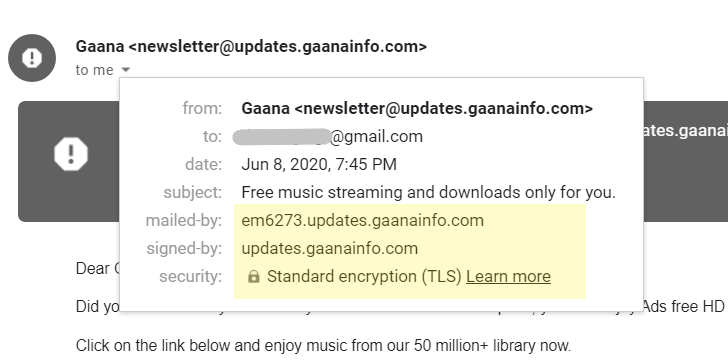
In addition, the security section indicates whether email is encrypted using TLS or SSL encryption during sending. These encryption standards ensure that no third party can eavesdrop or tamper with email during the sending process.
Emails from corporations, companies, organizations or banks will always have mailed-by , sign-by fields with official domain names, accompanied by encryption standards. Meanwhile, most phishing emails don't use secure connections, nor do they have any certificates or encryption methods. Even when this information is available, they are usually general information and are not relevant to the official domain name.
3. Identify links, phishing buttons in emails
Before clicking on any link or button in an email, you should hover the mouse pointer over it.
Immediately, you will see the actual link or click button at the bottom left of the browser. This will help you check whether these objects take you to a fake website, contain malicious code, or a website that is completely unrelated to the official website.

4. Check for spelling and grammar errors in emails
It sounds humorous, but it is an effective way to prevent phishing emails.
Phishing emails often have sloppy and ugly presentations, as well as often make silly spelling mistakes. Therefore, please check the email content to see if it contains any spelling, grammar errors. Also, you need to check if the email uses the keywords you often see in the junk email you've received before. If you make one or all of the errors mentioned above, it is definitely a fake email.
5. Check the attached file
Do not open attachments from senders you do not know unless you are sure it is safe. In many cases, the attachment is often a malicious file, and it can infect a computer or network when a user clicks on it.
Therefore, if an email has an attachment, check it for any unusual signs. In addition, always equip anti-virus software for personal or corporate computers.
How to identify unsafe websites
Links, buttons in emails or on social networks can redirect you to a fake website that looks exactly like the official website. Therefore, before entering any personal information, or paying for anything, it is essential to check that the website you are about to visit is safe.
1. Check the URL
As noted above, the URL can help determine the validity of a website. When you visit a website, always check that it is the official website of a company, organization, or corporation. For example, flipart.com is the official physical address, so if you see any other domain names than this one, for example flipart.offer24.com, it is definitely a fake domain.

2. Check if the website is encrypted
The next thing you need to do is check to see if the website you visit uses any coding standards. If you see a padlock icon next to the website's URL, the site uses SSL or TLS encryption . If you do not know, websites using HTTPS (HTTP + TLS) are usually more secure than websites that use HTTP .
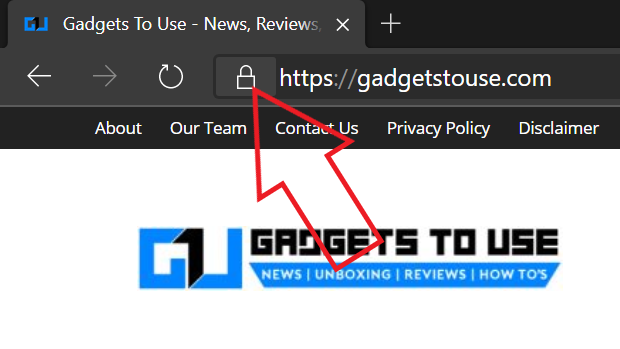
Encryption standard SSL to ensure your information is transmitted safely and without any third party can eavesdrop or interfere with the data. Without SSL , the risk of data being eavesdropped or stolen will be very high.
Therefore, if you see a website using HTTP or FTP and do not have a padlock icon next to the domain name, do not enter sensitive information such as credit card information, home address, information. finance,.
3. Identify phishing websites based on domain names
Not all sites with SSL or HTTPS encryption are official and secure sites. Hackers can trick you with subdomains similar to the main domain.

For example, the official PayPal website has the domain name paypal.com. Therefore, if you see any other domain name, such as the domain name in the image below, it is a fake address. In this case, the hacker created the domain 'paypal.com.confirm-manager-security.com' to deceive the victim's vision. If not observed carefully, victims may think this is the PayPal website because the phrase 'paypal.com' in the URL.
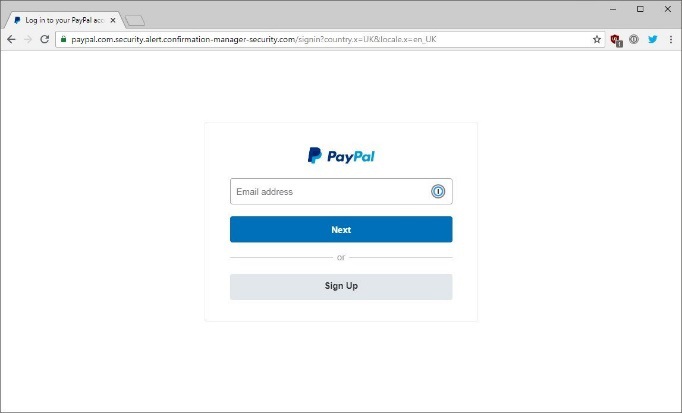
You should note that the real domain name is the part before the '.com' section. For example, in the address 'paypal.com', the section 'paypal' is the domain part. Similarly, in 'paypal.com.xyz.com', the section 'paypal.com.xyz' is the domain name.
4. Check the website domain name using Google's Safe Browsing service
Google's Safe Browsing tool allows users to check if a website is fake.
To use this tool, go to the following address, then enter the website address you suspect and wait a moment for it to analyze and display the results in the Current status section .
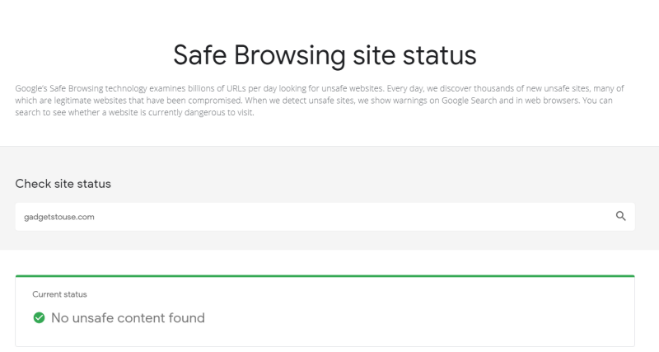
You should read it
- Instructions for creating email according to your own domain name on Google
- Instructions on how to check website life
- How to choose the best domain name?
- Instructions for setting up a custom email domain on iCloud
- Check email with password leaked by the Information Security website
- How to create your own free domain email with Zoho Mail
- How to check your website speed fast or slow
- Learn about .io domain names
May be interested
- 5 ways to identify safety extension before installation
 currently, there are thousands, millions of extensions and a wide variety of genres in browsers. therefore, you need to know how to anticipate unsafe extensions, avoid false false settings, contain malicious code, malware, data collection, ...
currently, there are thousands, millions of extensions and a wide variety of genres in browsers. therefore, you need to know how to anticipate unsafe extensions, avoid false false settings, contain malicious code, malware, data collection, ... - If you see this email in your inbox, delete it immediately!
 inboxes are flooded with fake messages, but they go undetected by spam filters - anyone can receive them.
inboxes are flooded with fake messages, but they go undetected by spam filters - anyone can receive them. - Apple shows users how to distinguish phishing emails from the App Store
 apple has just published a guide on how to distinguish fraudulent emails.
apple has just published a guide on how to distinguish fraudulent emails. - Firefox is about to mark all HTTP pages as unsafe
 when the number of websites switches to https a lot, browsers will soon mark every http page as 'not secure' by default.
when the number of websites switches to https a lot, browsers will soon mark every http page as 'not secure' by default. - How to report phishing and malicious websites in Google Chrome
 now you can easily report phishing and malicious websites in chrome with the help of extensions. let's see how to do it.
now you can easily report phishing and malicious websites in chrome with the help of extensions. let's see how to do it. - 4 tools to detect phishing emails
 email phishing is no longer as simple as it used to be. scammers are now tech-savvy criminals who leverage advanced tools to scam victims.
email phishing is no longer as simple as it used to be. scammers are now tech-savvy criminals who leverage advanced tools to scam victims. - Microsoft shows how to avoid trapping phishing
 microsoft has issued a warning and recommended ways to protect users of e-mail services ...
microsoft has issued a warning and recommended ways to protect users of e-mail services ... - Google Chrome will block unsafe downloads on HTTPS websites
 this means that users will not be able to download executable or less secure compressed files distributed over an https connection.
this means that users will not be able to download executable or less secure compressed files distributed over an https connection. - What is Unsafe Rust?
 unsafe rust gives you more control over memory. the article will give you everything you need to know about using unsafe rust and understand the risks of using it.
unsafe rust gives you more control over memory. the article will give you everything you need to know about using unsafe rust and understand the risks of using it. - Google discovers over 18 million Covid-19 phishing emails per day
 tipsmake - increasing fraudulent tactics to take advantage of users' 'bad news' mentality in the context of covid-19 epidemic becoming the top concern worldwide.
tipsmake - increasing fraudulent tactics to take advantage of users' 'bad news' mentality in the context of covid-19 epidemic becoming the top concern worldwide.










 Detailed instructions for installing Korean keyboard on Windows
Detailed instructions for installing Korean keyboard on Windows Microsoft unblocked GameInput updates on Windows 10 2004
Microsoft unblocked GameInput updates on Windows 10 2004 How to view all Wikipedia articles without an internet connection
How to view all Wikipedia articles without an internet connection Addresses an issue where Cortana is disabled on Windows 10
Addresses an issue where Cortana is disabled on Windows 10 How to log out of Facebook Messenger completely on iOS and Android
How to log out of Facebook Messenger completely on iOS and Android How to adjust the laptop screen brightness with just one operation
How to adjust the laptop screen brightness with just one operation